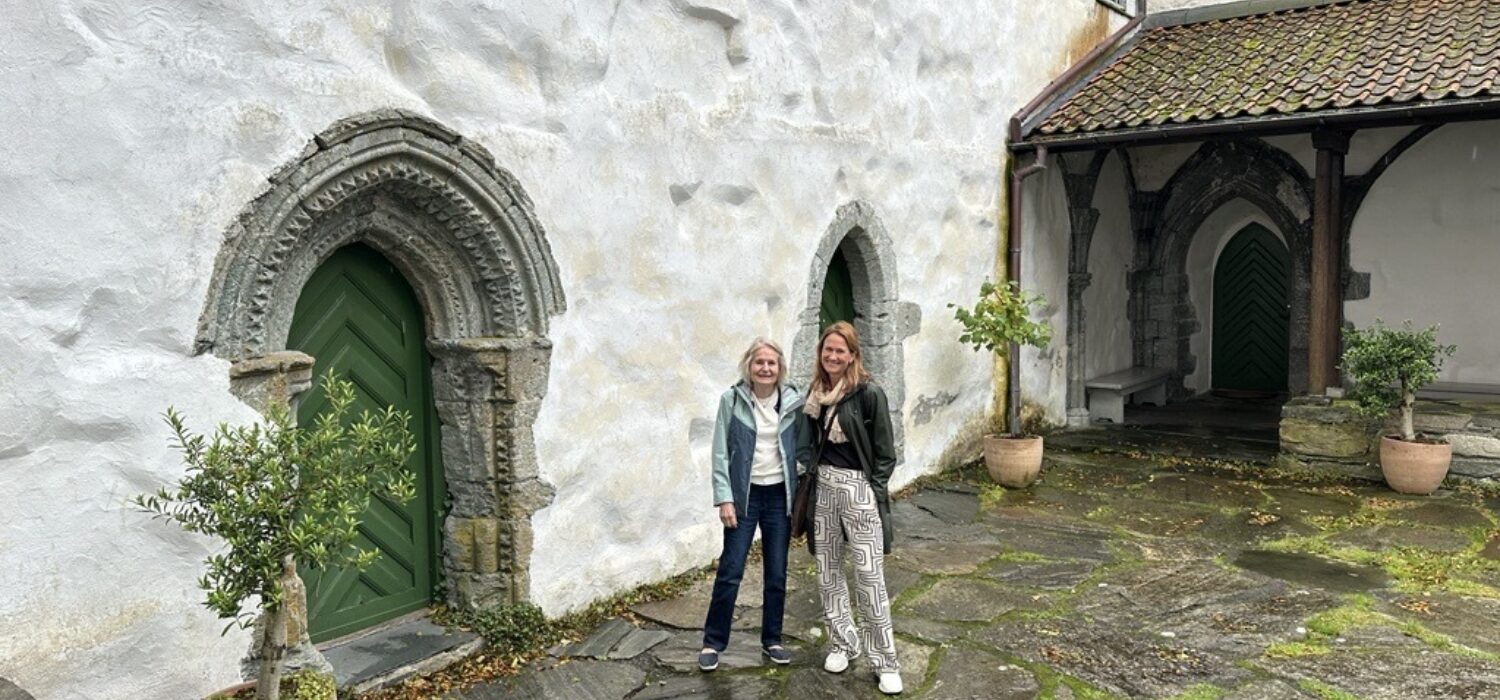Magnus Lagabøter - Back to Utstein Monastery
Magnus Lagabøter and His Law of the Land of 1274 Have Received Significant Attention in the Past Year
750 years have been marked and celebrated for this groundbreaking and far-reaching law, which, at such an early time, showed special care for the most vulnerable members of society.
Astrid Lærdal Frøseth is a trained social worker and lawyer. As a district court judge, she encountered many of society's weakest individuals in her work with the law. Since her retirement, she has developed a strong interest in Magnus Lagabøter’s Law of the Land of 1274 – long before the anniversary celebrations were planned.
Frøseth has been so dedicated to raising awareness about the law that she has contributed to making both research and an exhibition about the Law of the Land possible.
Exhibition at the Abbot’s House
In the spring of 2025, the exhibition Miserabelis Personae – The Weak in Society, King Magnus Lagabøter's Law of the Land of 1274 will move into the Abbot’s House at Utstein Monastery.
"I have long thought that the Abbot’s House would be a great place," says Astrid Lærdal Frøseth.
The exhibition has had quite a journey, both nationally and internationally, since it was first shown at Petrikirken in Stavanger back in 2016. Since then, the exhibition, developed by the Stavanger Museum and the Norwegian Museum of Childhood in collaboration with skilled professionals like Jørn Øyrehagen Sunde and Erik Opsahl, has traveled from Stavanger to Bergen, Aga in Hardanger, Shetland, Frosta in Trøndelag, Gulen in Sogn, Uvdal, Eidsvoll, Moster, Alta, and Domkirkeodden in Hamar. Now it will return to the Stavanger region and be displayed at Utstein Monastery.
Magnus’s Training at Utstein
Utstein is not a random location for the exhibition about Magnus Lagabøter and his Law of the Land. The story of King Magnus, who later earned the nickname Lagabøter, can, like much of history, be interpreted in different ways. However, several historians and legal historians believe there is good reason to assume that Magnus spent time at Utstein and received part of his education from the monks there.
Now, old documents, known as "diplomas," from Utstein are being sought. Every place the exhibition has visited has included local adaptations, and historical legal documents have been discovered, explains Hege Stormark, project manager for the exhibition throughout the years and its entire journey. Stormark is a curator at Stavanger Museum, responsible for the Norwegian Museum of Childhood.
Medieval Reforms
"I have always been interested in history and fascinated by how people have built and organized society. The Middle Ages have often been described as dark and gloomy, but now we know that even in the Middle Ages, there were social reforms and thoughts about caring for the most vulnerable – including children," says Astrid Lærdal Frøseth.
In the traveling exhibition about the Law of the Land, which will soon be shown at Utstein Monastery, two children play a central role. Ten-year-old Kristin and Magnus, from opposite ends of the 13th-century social ladder, tell the story.
"This way, children have been engaged and taught about Magnus Lagabøter’s Law of the Land at all the different places the exhibition has visited," explains Hege Stormark.
Now, Kristin and Magnus will take their place in the Abbot’s House at Utstein Monastery to tell visitors about the remarkable law that, over the course of 750 years, has helped make life a little easier for the weakest members of our society.
